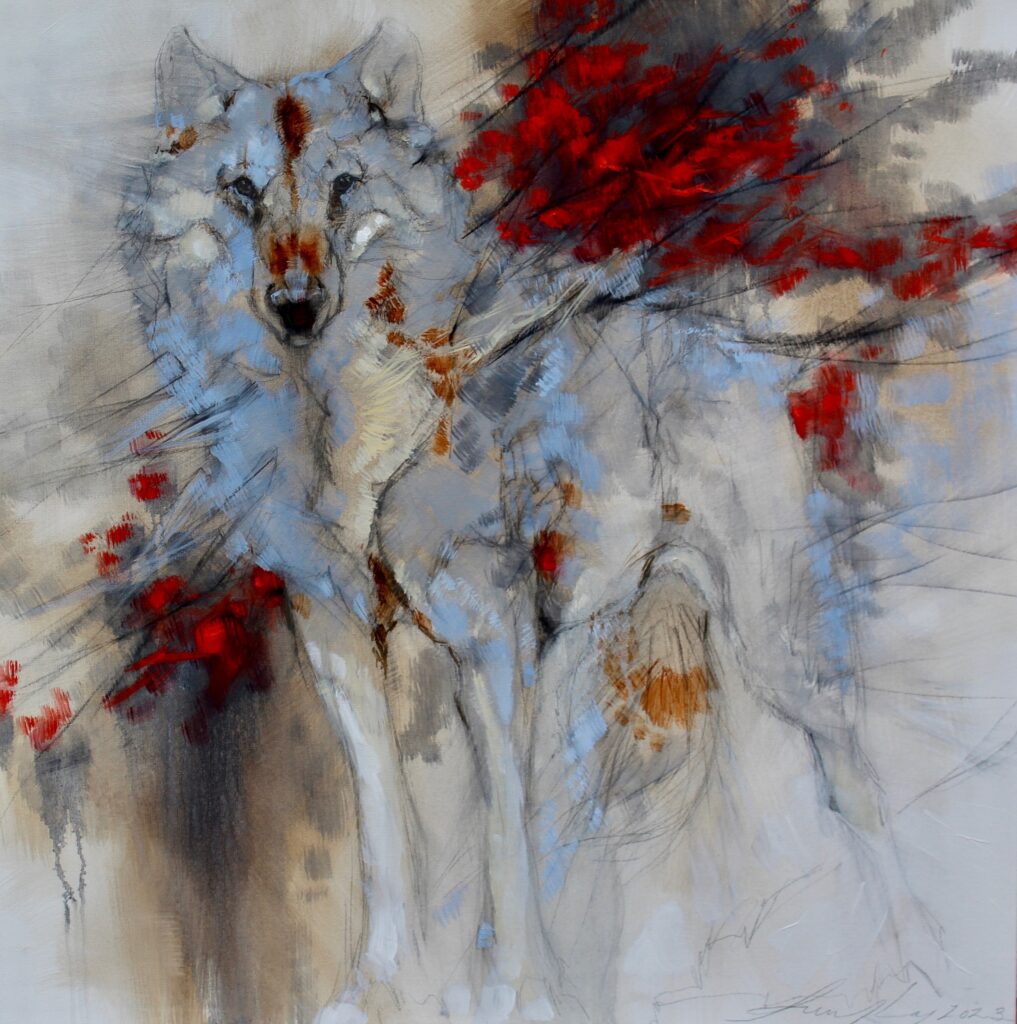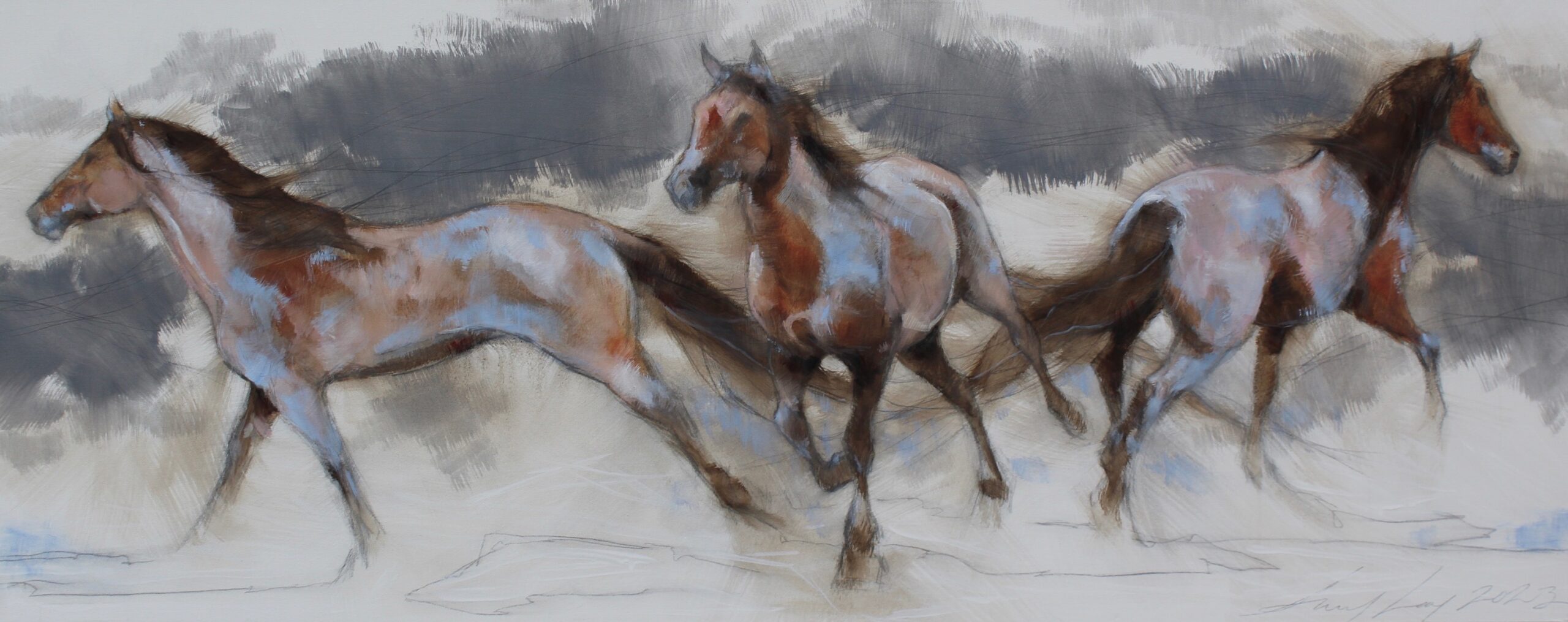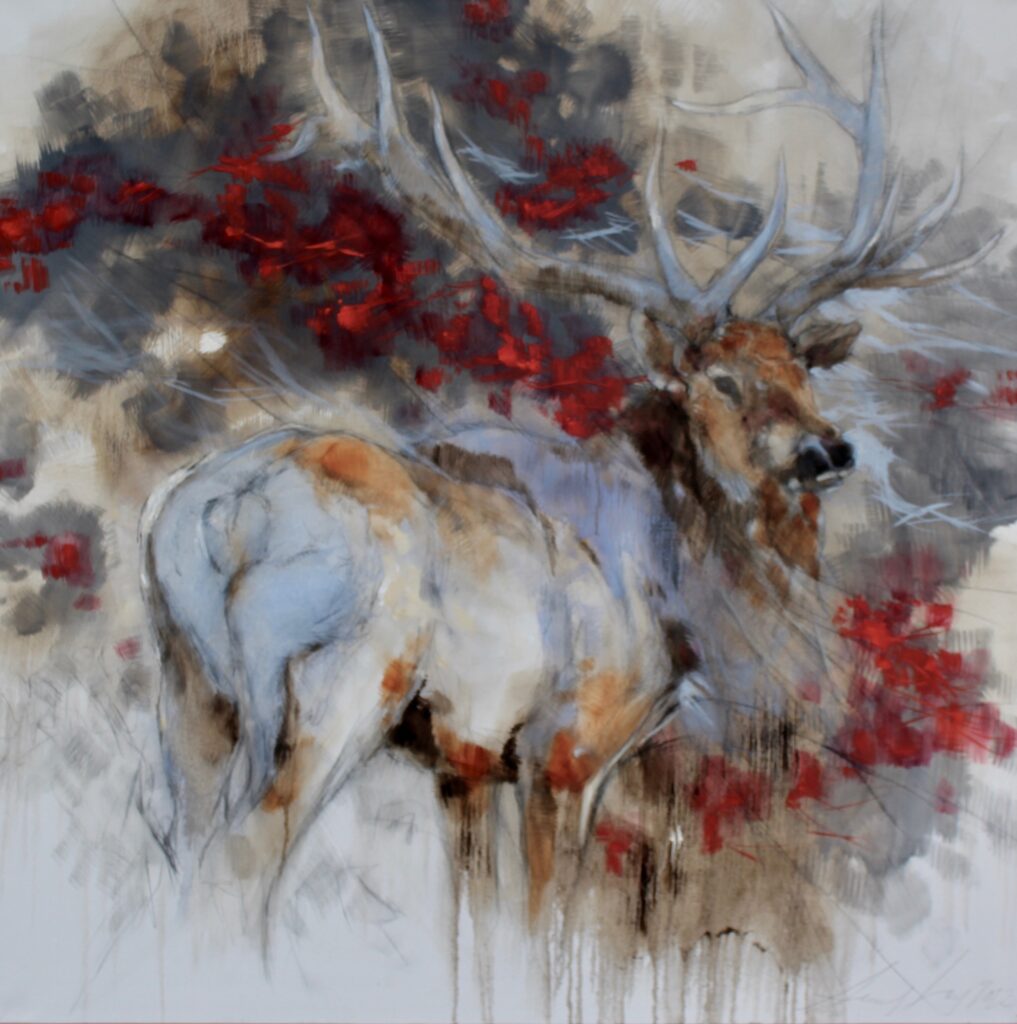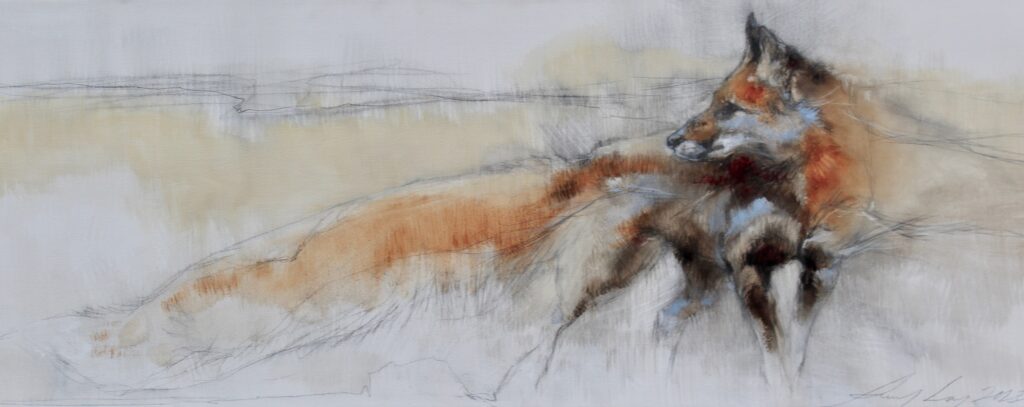
Amy Lay admits that it took her a few years to recognize the value of the art degree she earned from Eastern Oregon University in 1994. At the time, most of the faculty members were interested only in abstract art and didn’t appreciate her passion for wildlife and nature.
Since those were the only subjects that interested her, Lay often felt that her instructors snubbed her. But there was one professor who encouraged her to take the time to explore and to develop her own style. Thirty years later, the style that emerged from that exploration has become the hallmark of Lay’s wildlife paintings.
As a student, she focused on watercolors. She had been using them since she was a child and loved the looseness and freedom they allowed. She also loved that the pencil lines of her original drawing showed through the paint. The drawing, she says, has always been the most important part of any piece she creates.
“I spend the majority of my time on the drawing,” Lay says. “That’s the slow part for me. The paint goes on fast, but the drawing renders slowly.”
Over time, the lines of the drawing that show through her paint — she now works in oils — have become the most recognizable element of every painting she does. “The pencil drawing is the bones of the piece,” she says. “Whatever else I’m going to do with the piece, I need to start with the drawing. That’s the most important part; it’s got to hold up the whole piece.”

Lay’s pencil is the first thing to touch the canvas — and it’s also the last. As she paints, she orients herself around the first line she draws. If it gets faint, she darkens it up. And when she finishes painting, she draws the line one last time. “That’s my signature thing,” she says. “The pencil line is always there.”
Collectors have come to expect it, which is exactly what Lay was hoping would happen. She wanted to have a style that was uniquely her own, one that others would recognize when they saw it. And they do. “When people see my work, they know that it’s me,” she says. “That’s what I always wanted.”
Lay grew up in the northeastern corner of Oregon. Her family’s remote ranch sat among the pine trees of the Wallowa Mountains and butted up against the national forest. “It’s very, very rural — at least 20 miles from a town in any direction,” she says. “It’s just kind of wild still, one of those forgotten places that hasn’t changed much over time.”
In that setting, Lay developed a love of animals and an appreciation for nature. In addition to the cattle, horses, sheep, chickens, dogs, cats, and guineas that were part of the ranching operation, deer and elk were often on their land — and in their freezer, thanks to the hunting exploits of her dad, brothers, and uncles. Wolves and coyotes were also nearby, and the stream that ran through their land was full of rainbow trout.
“I was constantly surrounded by animals,” Lay says. “The horses, especially, were my closest companions. Some of the old ranch horses were a little like babysitters for me. I just had such a strong bond with them.”
After earning her art degree, Lay returned to her hometown to raise her own family, which includes three children — a son and two daughters, now all grown. She went on to earn a degree in teaching and spent 10 years teaching high school history at the same school she had attended.

During that time, Lay also continued to paint and began to see gallery representation and to attend art shows. She started making friends, becoming known, and attracting the attention of collectors. She told herself that, when she was able to make more money with her art than she did teaching for two straight years, she would quit her job and try to make it as an artist.
“That happened in 2010,” Lay says. “I was a little worried to quit, to be honest. I loved teaching, and I had a good job. It was hard to leave it, but art had been the plan for my whole life, from the time I was a little kid. I knew I had to do it.”
Lay and her husband, Thomas Terry, moved their family to Jackson, Wyoming, to be closer to the galleries that were carrying her work. With more time to focus on her art, Lay was able to hone her style and develop closer relationships with galleries.
“The gallery owners are truly my partners,” she says. “I have been able to have strong, long relationships with my partners, which has made this become a true career for me. For so long, I felt like I was on the fringes, but now it’s sustainable. It feels about as secure as you can get in the art world, the most secure that I’ve ever felt.”
After eight years in Wyoming, with the kids grown and on their own, Lay and Thomas moved back to Oregon. They returned to the now-retired ranch, where they are closer to family and to many of the animals that inspire Lay. On a recent day there, she saw 50 elk hanging out just below her house. She also regularly hears the coyotes that are constantly stealing her chickens. And there are so many birds. “it’s a bird party here,” she says. “We’ve got swallows, blue birds, sandhill cranes, Steller’s jays, golden eagles hawks — it’s a bird mecca.”
Being back in Oregon has also opened up some new ideas for Lay. She missed the ranching lifestyle while she was gone and has been thinking about expanding her artwork beyond wildlife to embrace more of the cowboy lifestyle that she grew up with. She’s been painting more horses and longhorns and even dabbling with figures.
“it won’t be your typical cowboy,” Lay says. “I want it to be the West that I know, to show what I think of when I think of the West. I want to show what’s in my heart. And I want it to look like me, to look like my style.”
Early in her career, Lay used photographs as references for her drawings of wildlife. But she often ended up frustrated because her drawings didn’t end up looking like the photographs. Eventually, she stopped relying on photos and focused more on her drawing skills. Now she rarely uses a photo to guide her drawing.

“When I finally let go of following the photos, I felt like my work improved,” Lay says. ” I think it helps each painting to look more like my work. It isn’t perfect, it isn’t exact, but I don’t want it to be. I want it to be artful.”
Instead of capturing every detail, Lay wants her work to show the nobleness of each animal she paints. “I want to promote the animals, to put them in the best light that I can imagine,” she says. “I want the painting to be able to grab people’s attention but also to show the animal in a gesture or a pose that shows their power and their nobleness.”
Yet, when people ask Lay what her goal as an artist is, it isn’t her subject matter that she thinks about first. For her, it’s about her unique style, about the pencil lines that have grown and evolved during her more than three decades as an artist.
“For me, it’s about my style,” she says. “No matter what I’m painting — it could truly be anything — my style is the one thing of value that I have in there. It’s my sacred thing, my true north, and I have to protect it.”
The way Lay paints has changed, she says, and will continue to do so, but the pencil lines remain. She doesn’t think that will ever change.
“If I could do one thing as an artist, I wanted to develop a style that was recognizable,” Lay says. “And now that I’ve done that, I want to keep it. This is one thing I’m not going to lose.”